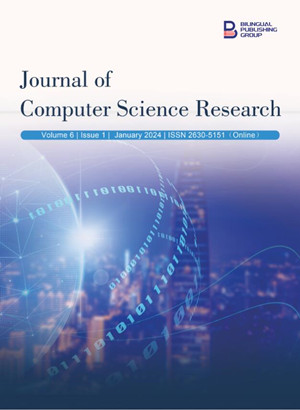
Exploring Alternatives to Create Digital Twins from and for Process Simulation
DOI:
https://doi.org/10.30564/jcsr.v6i1.6168Abstract
In this work, Digital Twins based on Neural Networks for the steady state production of styrene were generated. Thus, both the Aspen Technology AI Model Builder (alternative 1) and a homemade MS Excel VBA code connected to Aspen HYSYS and Aspen Plus (alternative 2) were used with this same aim. The raw data used for generating the Digital Twins were obtained from process simulations using Aspen HYSYS and/or Aspen Plus, which were connected through a recycle-like stream via automation for solving the entire simulation flowsheet. Aspen HYSYS was used for solving the pre-heating, reaction, and stabilization sections of the process whereas Aspen Plus ensured the computing of the separation and purification columns. Both alternatives led to an excellent prediction showing the capability of creating Digital Twins from and for process simulation.
Keywords:
Digital Twin; Aspen Hybrid Model Builder; Aspen HYSYS; Aspen Plus; Automation; MS Excel-VBAReferences
[1] Lee, J., Davari, H., Singh, J., et al., 2018. Industrial Artificial Intelligence for industry 4.0-based manufacturing systems. Manufacturing Letters. 18, 20–23. DOI: https://doi.org/10.1016/j.mfglet.2018.09.002
[2] Jan, Z., Verma, B., 2020. Multicluster class-balanced ensemble. IEEE Transactions on Neural Networks and Learning Systems. 32(3), 1014–1025. DOI: https://doi.org/10.1109/TNNLS.2020.2979839
[3] Feise, H.J., Schaer, E., 2021. Mastering digitized chemical engineering. Education for Chemical Engineers. 34, 78–86. DOI: https://doi.org/10.1016/j.ece.2020.11.011
[4] Murphy, K.P., 2012. Machine learning: A probabilistic perspective. MIT Press: Cambridge.
[5] Mashaly, M., 2021. Connecting the twins: A review on digital twin technology & its networking requirements. Procedia Computer Science. 184, 299–305. DOI: https://doi.org/10.1016/j.procs.2021.03.039
[6] Rojek, I., Macko, M., Mikołajewski, D., et al., 2021. Modern methods in the field of machine modelling and simulation as a research and practical issue related to Industry 4.0. Bulletin of the Polish Academy of Sciences. Technical Sciences. 69(2), e136717. DOI: https://doi.org/10.24425/bpasts.2021.136717
[7] Hehenberger, P., Bradley, D., 2016. Mechatronic futures: Challenges and solutions for mechatronic systems and their designers. Springer: Berlin.
[8] Cheng, J., Zhang, H., Tao, F., et al., 2020. DT-II: Digital twin enhanced Industrial Internet reference framework towards smart manufacturing. Robotics and Computer-Integrated Manufacturing. 62, 101881. DOI: https://doi.org/10.1016/j.rcim.2019.101881
[9] Madni, A.M., Madni, C.C., Lucero, S.D., 2019. Leveraging digital twin technology in model-based systems engineering. Systems. 7(1), 7. DOI: https://doi.org/10.3390/systems7010007
[10] Damour, C., Benne, M., Grondin-Perez, B., et al., 2010. Nonlinear predictive control based on artificial neural network model for industrial crystallization. Journal of Food Engineering. 99(2), 225–231. DOI: https://doi.org/10.1016/j.jfoodeng.2010.02.027
[11] Velásco-Mejía, A., Vallejo-Becerra, V., Chávez-Ramírez, A.U., et al., 2016. Modeling and optimization of a pharmaceutical crystallization process by using neural networks and genetic algorithms. Powder Technology. 292, 122–128. DOI: https://doi.org/10.1016/j.powtec.2016.01.028
[12] Yang, M., Wei, H., 2006. Application of a neural network for the prediction of crystallization kinetics. Industrial & Engineering Chemistry Research. 45(1), 70–75. DOI: https://doi.org/10.1021/ie0487944
[13] Singh, V., Gupta, I., Gupta, H.O., 2007. ANN-based estimator for distillation using Levenberg-Marquardt approach. Engineering Applications of Artificial Intelligence. 20(2), 249–259. DOI: https://doi.org/10.1016/j.engappai.2006.06.017
[14] Pandey, D.S., Das, S., Pan, I., et al., 2016. Artificial neural network based modelling approach for municipal solid waste gasification in a fluidized bed reactor. Waste Management. 58, 202–213. DOI: https://doi.org/10.1016/j.wasman.2016.08.023
[15] Azzam, M., Aramouni, N.A.K., Ahmad, M.N., et al., 2018. Dynamic optimization of dry reformer under catalyst sintering using neural networks. Energy Conversion and Management. 157, 146–156. DOI: https://doi.org/10.1016/j.enconman.2017.11.089
[16] Bagheri, M., Akbari, A., Mirbagheri, S.A., 2019. Advanced control of membrane fouling in filtration systems using artificial intelligence and machine learning techniques: A critical review. Process Safety and Environmental Protection. 123, 229–252. DOI: https://doi.org/10.1016/j.psep.2019.01.013
[17] Kakkar, S., Kwapinski, W., Howard, C.A., et al., 2021. Deep neural networks in chemical engineering classrooms to accurately model adsorption equilibrium data. Education for Chemical Engineers. 36, 115–127. DOI: https://doi.org/10.1016/j.ece.2021.04.003
[18] Digital Twins: Essential to Driving Sustainable Operations for Chemical Producers [Internet]. Aspen Technology Inc.; 2021. Available from: https://www.aspentech.com/-/media/aspentech/home/resources/white-papers/pdfs/fy22/q2/at-07361-wp-digitaltwins_final.pdf
[19] Course EHM101: Introduction to Aspen Hybrid Models for Engineering [Internet]. Aspen Technology Inc.; 2020. Available from: https://esupport.aspentech.com/UniversityCourse?Id=a3p4P000000Y4WVQA0
[20] Hybrid Modeling: AI and Domain Expertise Combine to Optimize Assets [Internet]. Aspen Technology Inc.; 2020. Available from: http://www.bluesp.co.za/wp-content/uploads/2021/02/AT-06425_POV_Hybrid_Modeling.pdf
[21] Aspen Hybrid Models V12.1 [Internet]. Aspen Technology Inc.; 2020. Available from: https://www.aspentech.com/-/media/aspentech/home/resources/faq-documents/pdfs/fy22/q2/at-06496-hybrid-models-customer-faq.pdf?sc_lang=en
[22] Aspen Hybrid Models: The Next Generation of Process Simulation Technology [Internet]. Aspen Technology Inc.; 2020. Available from: https://www.aspentech.com/en/resources/blog/aspen-hybrid-models-the-next-generation-of-process-simulation-technology
[23] Luyben, W.L., 2011. Design and control of the styrene process. Industrial & Engineering Chemistry Research. 50(3), 1231–1246. DOI: https://doi.org/10.1021/ie100023s
[24] Haydary, J., 2019. Chemical process design and simulation: Aspen Plus and Aspen HYSYS applications. Wiley-AIChE: Hoboken, New Jersey.
[25] Cui, C., Li, X., Guo, D., et al., 2017. Towards energy efficient styrene distillation scheme: From grassroots design to retrofit. Energy. 134, 193–205. DOI: https://doi.org/10.1016/j.energy.2017.06.031
[26] Tibshirani, R., 1996. Regression shrinkage and selection via the lasso. Journal of the Royal Statistical Society Series B: Statistical Methodology. 58(1), 267–288. DOI: https://doi.org/10.1111/j.2517-6161.1996.tb02080.x
[27] Hagan, M.T., Menhaj, M.B., 1994. Training feedforward networks with the Marquardt algorithm. IEEE Transactions on Neural Networks. 5(6), 989–993. DOI: https://doi.org/10.1109/72.329697
[28] Valverde, J.L., Ferro, V.R., Giroir-Fendler, A., 2022. Estimation of e-NRTL binary interaction parameters and its impact on the prediction of thermodynamic properties of multicomponent electrolyte systems. Fluid Phase Equilibria. 551, 113264. DOI: https://doi.org/10.1016/j.fluid.2021.113264
[29] Hagan, M.T., Demuth, H.B., Beale, M., 1997. Neural network design. PWS Publishing Co.: Worcester.
Downloads
How to Cite
Issue
Article Type
License
Copyright © 2024 Author(s)

This is an open access article under the Creative Commons Attribution-NonCommercial 4.0 International (CC BY-NC 4.0) License.




 Jaime Barbero-Sánchez
Jaime Barbero-Sánchez






